Space
The International Space Station
Published
12 months agoon


The International Space Station
The International Space Station, or ISS for short, is a multi-piece space structure that is placed in low Earth orbit and several elite astronauts live in it for a certain period of time, during various missions. The process of building the International Space Station started in 1998 and it is said that it can be used until 2028. As its name suggests, the International Space Station is a multinational project, and the cost of its construction and development is divided among several specific countries; But according to the statistics and evidence, it can be said that Russia and America are the main contractors of the project and provide most of the expenses related to the station. Every year, some astronauts are sent to the station and return to Earth to carry out some necessary research. The existence of the International Space Station is necessary to investigate the effects of living in space on the human body; Because soon man will travel to planets like Mars.
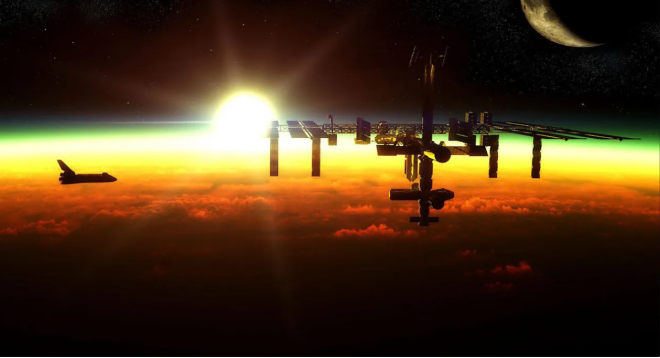

The International Space Station has been constantly being completed during its mission. The first structure of this station was launched into orbit in 1998 and the last module was installed on the station in 2011. NASA, Roscosmos (Russian space agency), Japan Space Agency, European Space Agency, and Canadian Space Agency are among the main contractors of the station and each of them has sent astronauts to the station. The budget of this station is provided internationally and the member countries are obliged to allocate a certain amount of their budget to the International Space Station every year. The cost of building the International Space Station until the moment of installation of the last module was 150 billion dollars, and for this reason, it is considered the most expensive structure of the human hand.
The International Space Station is the second home of humans in Earth orbit. People who go to the station experience zero gravity and are affected by the conditions of space. One of the reasons humans are stationed in the station is to measure the effects of space conditions on their bodies. When humans want to travel to planets like Mars, they have months to reach their destination; Therefore, during this period, they live in special conditions that will definitely have effects on their bodies. For this purpose, conducting a series of experiments in the International Space Station can reduce the risks of space travel.
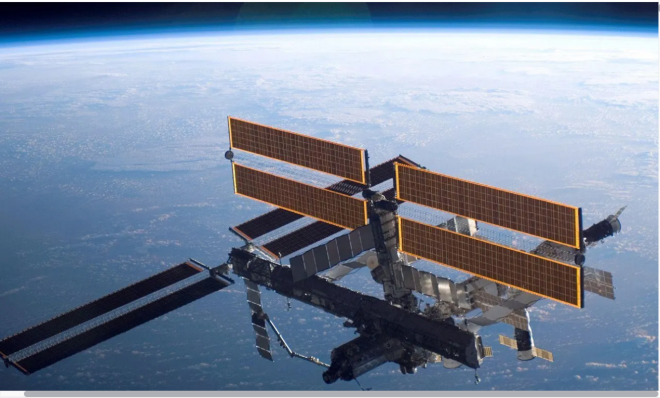

The International Space Station is not the first station to be built in the Earth’s orbit, and before that, stations such as Mir, Salyut, Almaz, and Skylab were also built in the Earth’s orbit; But ISS is the largest and most advanced of them and its mission duration is longer than others. This station has certain intricacies that make it an engineering masterpiece. In this article, we intend to put the International Space Station under the microscope and take a close look at all the details of the most expensive human structure.
Read More: Receiving a message from a distance of 16 million kilometers from the earth
History
The history of the construction and development of space stations goes back to the time of the Cold War and the height of the space competition. When the Saturn 5 rocket was being developed by America and by Dr. Werner von Braun and his group, this German engineer always had the idea of building a space residence in his mind. In the same years, in order to be able to explain this idea to people in a better way, Hanzmenda created cinematic works in which space stations were depicted. These stations were circular and rotating; Because in the hypothetical case, they should have created artificial gravity with their rotation. In these movies, many people traveled to the station and started businesses there; The ships also moved towards the station like the ships that dock at the port. A similar idea was recently portrayed in the movie Elysium.
These stations were like hotels on the way, and humans could go to the moon or Mars from there. This idea was very timeless, But that was exactly what Dr. Brown had in mind. This idea is not applicable even today despite the advances, But scientists have been able to implement the original idea of building a space station, and this work was done for the first time by the Soviet Union. The first space station was launched in 1971, and since then, the United States and the Soviet Union have always had a station or stations in orbit. The first station that was placed in the earth’s orbit was the Salyut space station (Салю́т), which was considered a military scientific project the Soviet Union was very sensitive about it and tried not to reveal any details about it and not to be available to the Americans.
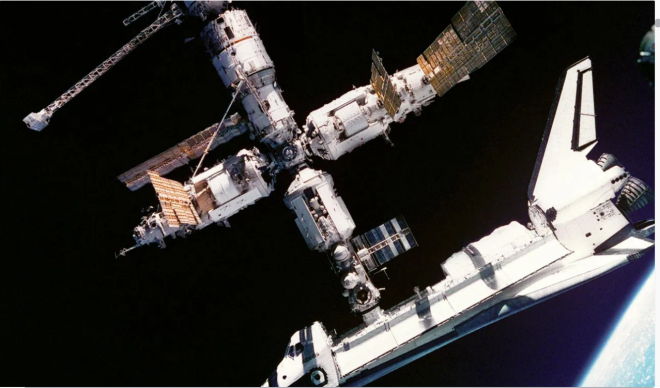

After the Salyut space station, it was the Americans’ turn to enter this field. Skylab was the first American space station in Earth orbit, which was sent into space at once by the Saturn V rocket in 1973. The Salyut station was a multiple project, the first of which was called Salyut 1, and actually, this station was a combination of the Almaz and Soyuz spacecraft systems. Almaz was a military system designed for space purposes by the Soviet Ministry of Defense, But later its usage was changed and it became a part of Salyut 1 station.
After the Soyuz 11 mission, the Soviet Union launched another space station called Salyut 2, which unfortunately was unsuccessful and did not reach Earth’s orbit. After this failed mission, the Soviet Union launched the Salyut 3, Salyut 4, and Salyut 5 space stations, and after the launch, the astronauts connected to the station with the help of the Saiz spacecraft and stayed there for a longer period of time to carry out new missions. Salyut stations were only connected to Soyuz spacecraft and it was not possible to connect them to other types of spacecraft. In September 1977, the Salyut 6 space station was launched, which had two entrances and the unmanned Progress spacecraft could also dock with it. Salyut 6 continued to work until 1982, and then it was replaced by Salyut 7, which was the last station of the Salyut project.
Salyut 7 was one of the news-making and controversial stations. This station was launched in 1982 and hosted 11 astronauts for 800 days; But in the same year, the Salyut 7 accident happened and the station was out of Soviet control. The electrical system of this station failed due to the impact of several cosmic bodies, and the station began to rotate in the earth’s orbit and the process of falling towards the earth began. The Soviet Union, which was under international pressure at the time, decided to launch two astronauts on a Soyuz spacecraft during a hasty mission to manually dock the rotating station and return it to a stable state. These two Russian astronauts managed to connect to the station and recover it, and this rescue operation is one of the most impossible missions in the history of aviation. The Salyut 7 space station later paved the way for the formation of the Mir space station project.
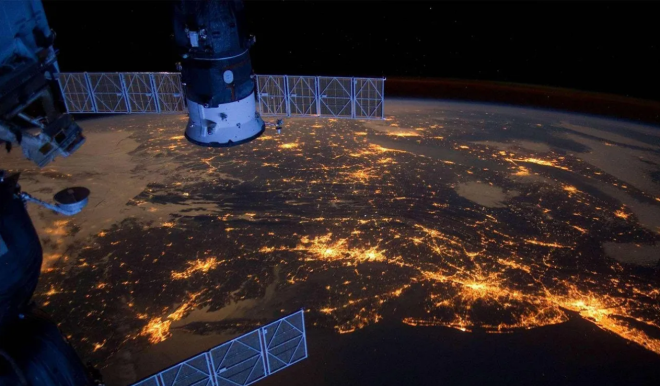

America, unlike the Soviet Union, did not invest much in the field of space stations, and before the development of the International Space Station, Skylab was the first and only American space station. Skylab was launched in 1973, But it was damaged during the launch and 2 of its solar panels were completely fragmented and another solar panel did not open completely. These events caused Skylab to have little electrical power in the circuit and the station’s temperature regulation system did not work well. To solve this problem, the United States launched the manned spacecraft Skylab 2 so that the astronauts could repair the station. These astronaut engineers were able to successfully repair the station bring it to a stable state and stay in the station for 28 days.
Orbital workshop, weatherproof module, multiple docking station, Apollo telescope unit, and Apollo spacecraft were among the constituent parts of Skylab. The Skylab 3 and 4 missions, whose crews stayed on the station for 59 and 84 days, respectively, docked with the station after the Skylab 2 mission. Skylab was not a permanent station, and the US intended to use it solely as a space laboratory to measure the effects of flights lasting a week to a month on the human body. Skylab 3 was the last mission to dock with the station, and the Skylab space station entered the Earth’s atmosphere much earlier than expected due to rapid orbital rotation caused by collision with intense solar activity and burned up in the sky over Australia.
Another space station was the Soviet Mir station, which was launched and assembled in 1986. Mir was considered the most advanced man-made space station at that time and was operational for 10 years. The first astronauts who went to the station were the same astronauts who performed the rescue operation of Salyut 7. These people stayed at Mir station for 75 days and then returned to Earth. The Mir space station consists of parts such as the life module (bathroom and kitchen, etc.), the mediating part, the assembly part, the Quantum 1 astrophysics module, the Quantum 2 airtight and scientific module, the Crystal technological module, the Specter module, the Periroda remote sensing module, The docking module was formed by the unmanned Progress spacecraft and the Soyuz spacecraft.


In 1994, Russia allowed the United States to allow American astronauts to spend some time at the Mir station to prepare for the International Space Station. Worried about the high costs of maintaining the Mir station, Roscosmos decided to partner with NASA; But the Russian government did not agree and said that it is better to abandon the station so that all the focus is on the International Space Station. Mir was a permanent space station, But the Russian government decided to direct it to the ground and destroy it. Finally, in 2001, the remnants of the Mir space station fell into the South Pacific Ocean.
According to the information we have obtained, we now know that the ISS is the ninth habitable space station in Earth orbit, It was developed after Diamond, Salyut, Skylab, and Mir, and perhaps inspired by them. The process of building the International Space Station began in 1998; But the first astronauts who stayed there were launched into space during the Expedition 1 mission on November 2, 2000. Since then, more than 17 years have passed and this is the longest presence of a space station in low Earth orbit. Before the International Space Station, the record for the longest stay of a space station in orbit was held by the Mir space station with 9 years and 357 days. The cargoes required for the International Space Station are transported to the station with the help of spacecraft such as Russia’s Soyuz and Progress, America’s Dragon and Cygnus, Japan’s H-II, and Europe’s transfer system. Before the cancellation of the space shuttle program, it was also possible to connect these shuttles to the station. The International Space Station has hosted astronauts, cosmonauts, and tourists from 17 different countries.
According to the contract signed between NASA and Russia’s Roscosmos, it was decided that the International Space Station will be a laboratory in low Earth orbit, where necessary investigations will be carried out to improve future space travel. NASA had predicted that humans will travel to Mars in the future and dangers are threatening them; Therefore, it is necessary to measure the results of being in space on the body in the International Space Station so that there are no problems for astronauts in future trips. In 2010, the US Space Flight Agency announced that the ISS had more potential and could be used for educational purposes and to share information with the public in the form of television programs.
Construction of the station
The construction of the International Space Station officially began in November 1998. Russia was the first country to produce the initial modules of the station, and all of these modules, except for the Razovet module, were robotically connected in space. The other modules of the station were launched by the American space shuttles and connected by the shuttle crew using the Canadarm2 robotic arm. By June 5, 2011, when the construction process of the station was completed, 159 pieces had been connected during 1000 hours of spacewalk, and this was considered a record. 127 spacewalks were performed by the station’s crew, and the remaining 32 were performed directly inside the shuttles and airlocks. Scientists on the ground had to constantly calculate the station’s beta angle and provide it to the astronauts so that the work went as well as possible. Beta is the angle between the orbital plane of a satellite and the solar radiation vector and shows how much energy a satellite receives during solar radiation to generate electricity. For the engineers who were building the station in space, the beta angle was of particular importance; Because it showed how many hours they were exposed to sunlight during the docking operation, and if the beta was not calculated, the shuttle could not be placed correctly on some modules during some limited hours.


The first module of the International Space Station is the Zarya module (Заря́) which was launched on November 20, 1998, by the Russian Proton self-propelled rocket. Zarya was a module that could provide the necessary propulsion power to be placed in the orbit, control the height, and also provide the necessary electrical power; unfortunately, it did not have enough facilities to be used for a long-term stay. Two weeks after Zarya, the United States launched the Unity module (Unity) in the STS-88 mission with the help of the space shuttle and several crew members. The Unity module was attached to the Zaria module by astronauts who performed several hours of spacewalk. Unity had two pressure-coupled adapters, one connecting to Zaria and the other to the space shuttle. At the same time, the Mir space station was still in orbit and could host the crew.
The International Space Station was uninhabitable for two years, and the Mir station was gradually decommissioned. On July 12, 2000, Russia launched the Zvezda (Zvezda) module into space. The Roscosmos space agency had planned Zivezda to deploy its solar arrays and communications antenna before connecting to Unity and Zaria. This module itself had a command center and was autonomous, But Zaria and Unity were controlled and commanded by ground stations. Zyuzda was the most advanced module to be attached to the ISS. After connecting Zyuzda to other modules, the task of controlling the overall structure of the station was taken from Zarya and given to Zyuzda. Zivzda was a large module where there were sleeping quarters for the crew, a kitchen, carbon dioxide scrubbers, humidifiers, oxygen generators, sports equipment, radio and television connected to the mission control system, etc. Zvezda was the module that made the ISS habitable for the first time.
The first crew of the International Space Station, in the form of the Expedition 1 mission and with the help of the Russian Soyuz TM-31 spacecraft, connected to the space station in November 2000. Late on the first day of the mission, astronaut Bill Shepard of NASA and cosmonaut Sergei Krikalyov of the Russian space agency, as two members of the Expedition 1 crew, announced in a radio message that they wanted to name the station Alpha. Alpha had previously been considered for the station’s naming, But America and Russia had in mind the name ISS. Now that the two astronauts had applied, NASA and Roscosmos decided to rename the Expedition 1 mission to Alpha. Shepard believed that they should name the entire station Alpha; Because alpha is always a reminder of being first. In a speech, he announced that this is the first experience of a long-term stay in space and that we are considered the pioneers of staying in space. NASA had agreed to some extent, But Russia said that this is not true and the Mir station has been habitable before, and if the name Alpha is to be chosen, Mir should be Alpha.
For two years after this mission, the station was still expanding. In 2001, a Soyuz rocket carried the Pierce Multiplexer into space. A pier is a connecting section that has vents to connect the manned Soyuz and the unmanned Progress spacecraft and acts as a trike. The space shuttles Atlantis, Discovery, and Endor also brought the Destiny Laboratory and the Quest airlock into space to dock with the station. In addition, for the first time, the Canadarm2 robotic arm and several other parts were also attached to the body of the station. Everything was going well and according to the plan until the explosion of the space shuttle Columbia disrupted the program. In 2003, the space shuttle Columbia exploded in the sky and killed all its passengers. This incident caused a two-year hiatus in NASA’s space shuttle program. The space shuttle program was suspended until 2005 when it was finally restarted with the launch of the space shuttle Discovery.
The process of assembling the modules of the space station started again in 2006 with the launch of the shuttle Atlantis in the STS-115 mission. During this mission, NASA attached the second set of solar arrays needed by the station to the main structure. The next three NASA missions also connected other body components and the third series of solar arrays to the station, and as a result, the power generation capacity of the station was completed. After Russia and America were sure about the power supply of the station, they started the process of sending the next modules. The Harmony Node and the Columbus Laboratory (belonging to the European Space Agency) were among the modules that were attached to the body of the station and other modules. Soon after the connection of these two modules, the Japanese Space Agency announced that the first part of the Kibo laboratory was produced and ready to be sent.
In March 2009, the STS-119 mission completed the construction of the subsystems and was able to install the fourth and final group of solar arrays on the hull of the station. The second and last part of Japan’s Kibo Laboratory was connected to the station by the STS-127 shuttle mission in July 2009, and then the Poisk module (По́иск), or the small research module, was launched by Russia. In February 2010, the STS-130 mission, carried by the space shuttle Endor, attached the third node, or Tranquility, to the station, along with the Cupola observation tower. A few months later, Russia also launched one of its last modules called Razvet (Рассве́т). Russia did not carry out the launch itself, but entrusted the task of the launch to the Atlantis space shuttle and paid the cost of the launch. Earlier, the US had financed the launch of the Proton rocket that launched the Zarya module into space in 1998.
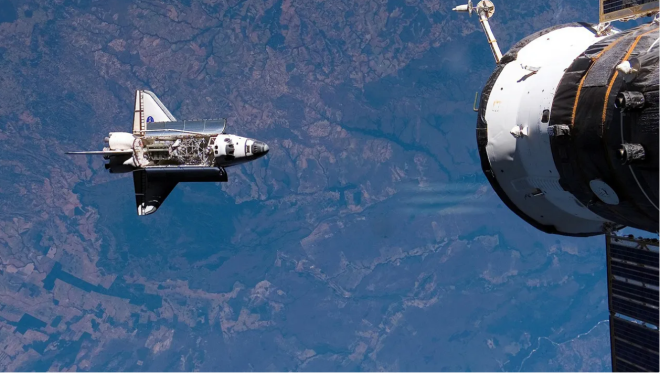

On its last mission in February 2011, Discovery delivered the Leonardo Pressurization Module to the station, and in the same year, the space shuttle Endor also docked the Alpha Electromagnetic Spectrometer during mission STS-134. As of June 2011, the space station consisted of 15 pressurization modules and an integrated structure, and member states declared that all major equipment was installed on the station and that anything launched after that would be considered auxiliary equipment. Currently, 5 other modules are in the launch queue. These modules are:
- The Nauka module (Нау́ка), which is a Russian multipurpose laboratory, connects to the Zyuzda module.
- The European Space Agency’s robotic arm
- Узловой module, which is a Russian spacecraft
- NEM-1 power supply module
- NEM-2 power supply module
The Russian Space Agency has announced that the Nauka module will most likely be launched in the last quarter of this year along with the robotic arm of the European Space Agency. After the Nauka module docks with the space station, Russia will also launch the Yuzloy module to connect to one of the Nauka module’s docking ports. When these 5 modules are connected to the station, the total weight of the station will be more than 400 tons. The net weight of the station constantly changes over time; Because newer modules are always added to the station. By September 2011, when the construction of the station was completed, its total weight was 417 tons. Of course, this is considering only the weight of the station structure itself and ignoring the weight of water tanks, gas tanks, laboratory equipment, clothes and personal belongings of astronauts, food, connected spacecraft, and other things.
The International Space Station is a third-generation modular space station. A modular structure allows the body of the station to be changed to suit different missions and new parts can be added or removed from the structure. Also, the modular structure has flexibility and its shape is not static.
The main modules of the station
As mentioned earlier, the International Space Station is made up of several different modules; But some of these modules are original and other modules are installed on top of these modules. Zaria, Unity, Zyvesda, Destiny, Quest, Pierce and Poisk, Harmony, Tranquility, Columbus, Kibo, and Coppola are among the core modules of the International Space Station currently installed on the station. There are a number of other modules that are going to be connected to the station soon, which we will also mention. In the following, we will examine each of these modules and their features.
Zaria module
Zarya, which is also known by the Russian name Заря́ meaning dawn, is the first module of the International Space Station that was launched by the Russian Space Agency (Roscosmos) and placed in orbit. The task of Zaria was to provide electricity, propulsion, and positioning of the International Space Station in the early stages of construction and production. When the other modules were launched and attached to Zaria, Zaria had no special function and is now used as a storage area. Zarya is actually a more advanced version of the Russian TKS spacecraft that was used to connect to the Salyut space station. As mentioned, Zaria means dawn; Because it was supposed to usher in a new era in spaceflight. Zaria was built by a Russian company, But the main owner of that company was the United States of America.


Initially, Zaria was supposed to act as one of the modules of the Mir space station; But unfortunately, Zaria was not ready until the Mir space station was stable. Zarya has the ability to maintain a station in orbit and, due to the batteries that are placed inside its body by default, it has the ability to provide power to one or more other modules until the solar arrays are launched. Zarya weighs 19,323 kg, is 12.56 meters long and 4.11 meters wide at its widest point, and is considered a medium module in terms of size. Zarya can be connected from three different parts, one of them is located exactly in the front part, another one is in the ground part and the other one is placed in the back part. The Unity module is connected to the Zarya’s front connector with the help of a push-fit adapter. The Zyuzda module is also connected to the end of Zarya, and its ground connection valve is also connected to the Soyuz and Progress spacecraft that come to the station. Not long ago, the Razovet module was attached to the downward docking port of Zarya, and now if a spacecraft arrives at the station, it must be attached to the Razovet module first.
Zaria has two solar arrays 10.67 meters long and 3.35 meters wide and 6 nickel-cadmium batteries that can produce 3 kilowatts of electricity. Zaria has 16 external fuel tanks that can hold 5.4 tons of fuel. Zarya has 24 large thrusters, 12 small thrusters, and two large engines that were used for the station’s orbital changes. Since the Zyuzda module connected with the station, Zarya’s engines were disabled; Because with Zyuzda, Zarya engines were no longer needed. Zarya’s fuel tanks are now used as a place to store the fuel needed by Zyuzda.
On November 20, 1998, Zarya was launched by a Russian Proton rocket from the launch pad of Cosmodrome 81 in Kazakhstan to an altitude of 400 km. Zarya was originally designed to have a useful life of 15 years and be able to fly autonomously for 6 to 8 months; But due to the delay in the launch of the Zyuzda module, Zarya had to move autonomously for more than two years. At first, Zaria’s battery charging circuits had problems; But gradually these problems were solved by Russian cosmonauts.
Unity module
The Unity module, also known as Node 1, is the first American module of the International Space Station launched by NASA. Unity uses a cylindrical design and can be connected to the station and other modules from 6 separate points. Unity is 4.57 meters in diameter and 5.47 meters long and was jointly developed by NASA and Boeing at the Marshall Space Flight Center in Alabama. Unity is the first docking module of the space station, followed by Harmony and Tranquility modules.
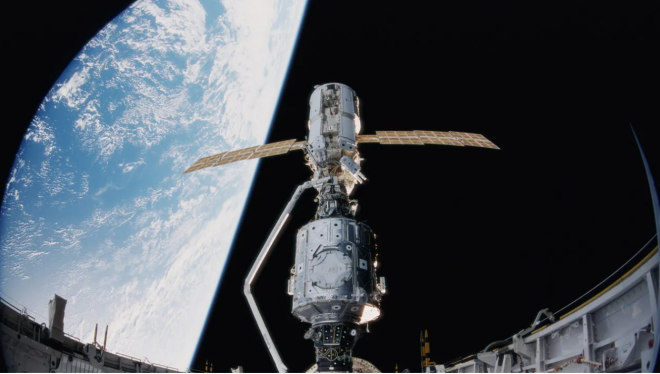

Unity was the main cargo of the space shuttle Endor, which was launched as part of the STS-88 mission. This mission was the first space shuttle mission to connect to the station. In space, before reaching the Zaria module, the rear end of the Unity module was attached to the Endor shuttle, and then they moved towards the Zaria module until they finally managed to attach the upper part of the Unity to the front section of the Zaria. Unity has 2 axial connection systems and 4 radial connection systems, and in addition to connecting to Zaria, it is connected to parts such as Destiny Lab, Z1 Integrated Structure, PMA-3 Pressure Connecting Adapter, Quest Airtight Knee, Leonardo Multipurpose Module and Raffaello Multipurpose Module Is. During the STS-120 mission, the Harmony module was also attached to the Unity side port. Tranquility and Coppola also docked with the Unity module during the STS-130 mission.
Some of the essential resources of the space station, such as fluids, life support systems, electrical systems, and data support systems, are precisely located in Unity to provide the necessary conditions for living in different parts of the station. More than 50,000 mechanical parts, 216 liquid and gas transmission lines, and 121 hidden and covered electrical cables (6 miles of cable) have been installed in the Unity node. The overall material of the module is aluminum and stainless steel.
Zvezda module
Zvezda, also known by the Russian name Звезда́ meaning star, is a Russian command and service module. Zvezda, the third module and one of the most important parts of the International Space Station, was able to provide everything needed to support life on the station after the launch. Zvezda was launched into space by a Russian Proton rocket on July 12, 2000, and connected to the Zarya module on July 26 of the same year. The Zyvezda module was built by the Russian company RKK Energia, which is one of the main contractors of the International Space Station.
The main frame of the Zyuzda structure was first built in the mid-1980s and was to be used as the core of the Mir-2 space station. In fact, for a while, this module was called Mir-2. The construction of the main part of this frame was completed in 1985 and the equipment was installed on it in October 1986. Zyuzda has a cylindrical design and is built in such a way that the crew can live and work in it. Zyuzda has a total of four connecting valves that are used to connect to other masoles. The total weight of Zyuzda is 18051 kg and it is 13.1 meters long. Solar panels are also installed on Zivzda, which are 29.7 meters long when opened.
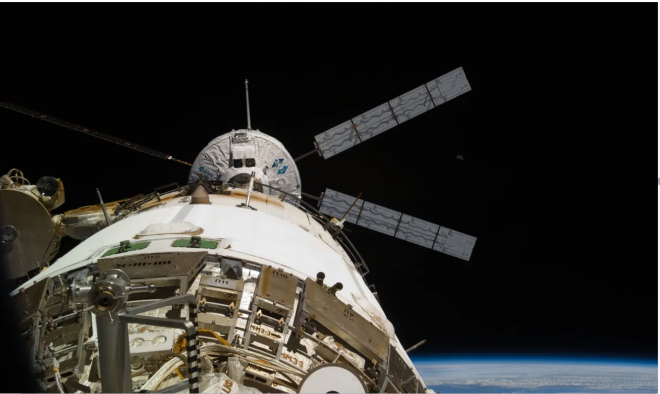

Zivzda has 14 windows, two of which have a diameter of 230 mm, and two crews sleep in the compartments. Six other windows with 230 mm diameter glass are located on the lower floor of Zyuzda and face the ground. One of the windows, which has a diameter of 410 mm, is located in the Zyuzda workshop. Other Zyuzda windows are placed in the transfer chamber and the laboratory part, respectively.
On July 26, 2000, Zyvezda successfully docked with the Zarya module, officially becoming the third module of the ISS. On September 11, 2000, the two crews of the STS-106 mission completed the final stages of connecting Zarya and Zivzda. This find was made during a spacewalk of 6 hours and 14 minutes by American astronaut Ed Lowe and Russian cosmonaut Yuri Melenchenko. They successfully connected 9 cables between Zarya and Zivzda. Zivzda was a module where there were places for the crew to sleep, a kitchen, carbon dioxide scrubbers, humidifiers, oxygen generators, sports equipment, radio and television connected to the mission control system, etc.
As Russia faced financial difficulties, it did not produce any supporting versions of Zyuzda; Therefore, the risk of launch was greatly increased. NASA decided to produce the Interim control module, which could launch this module as a backup if something went wrong during the launch. Fortunately, the launch was successful and Zyuzda did not have the slightest problem.
Destiny module
Destiny, also known as the American Laboratory, was the first American laboratory module that was attached to the space station. Dastini was connected to the Unity module by connecting valves. Destiny is NASA’s first research laboratory in Earth orbit after the destruction of the Skylab space station. The design and production of this module are under the responsibility of Boeing and the construction process of this 16-ton structure began in 1995 at the Marshall Space Flight Center. Destiny was transferred to the Kennedy Space Center in Florida in 1998; But due to interruptions in NASA’s plans and conducting a series of necessary tests, the launch was postponed until 2000. The Destiny Module was launched into space on February 7, 2001, by the Space Shuttle Atlantis as part of the STS-98 mission.


On February 10, 2001, Destiny arrived at the space station and was docked with the Unity module by the Canadian of the space shuttle Atlantis. Destiny has an aluminum structure and uses a cylindrical design. This module is 8.5 meters long and 4.3 meters in diameter. The front part of Destini is connected to the Unity module and its end part is also connected to node number 2. A glass window with a diameter of 510 mm is also placed on one side of the door that has a view of the ground. Destiny’s total weight is declared as 14520 kg, which is considered average.
Quest module
The Quest airlock knee, formerly known as the airlock knee module, is the first airlock of the International Space Station. Quest is designed in such a way that astronauts can enter space directly in space and stabilize the air pressure. In this airlock, astronauts can enter in Russian and American clothes and there is no problem in this regard. Until the launch of this module in 2001 and in the form of the STS-104 mission, Russian astronauts who used their special suits had to enter the station through the Zyuzda module, and American astronauts only entered the space shuttle connected to the station. The station could enter the interior of the station.


The Quest module consists of two main parts; One for keeping the spacesuits and the other for when the astronauts want to leave or enter the station. These two parts are completely isolated from each other. It was necessary to build the quest module; Because the American astronauts, who had their own spacesuits, could not enter the station through the Russian Mazul Zyuzda airlock, and it was not possible to enter from other parts either.
Pierce and Poisk modules
Пирс and По́иск are two Russian airlock modules, each of which has two different valves. Pierce was launched in August 2001 and provided a docking station for the Soyuz and Progress spacecraft. It also made it possible for Russian cosmonauts wearing Orlan-designed spacesuits to enter and exit the station. Pierce was supposed to be separated from the station by the Progress spacecraft in 2017 and fall towards the Earth to make room for the Russian Nauka laboratory; Lamel, due to the delay in the construction of the Naoka laboratory, the separation process of Pierce was also postponed until the end of 2018.
Poisk is another Russian docking module that was launched and attached to the station in 2009. Poisk was the first Russian module of the station to be launched after 2001. Poisk generally uses Pierce’s design. Pierce is connected to the lower part of the Zyuzda module, But Poisk is attached to its upper part. Poisk in Russian means search and discovery, and for this reason, it has a series of scientific tools and equipment.
Harmony module
Harmony, also known as Node 2, is the second American node of the International Space Station. This module has the ability to provide electricity and electronic data of the bus, and due to having 6 connection valves, it can be connected to different parts of the station. European Columbus module, Japanese Kibo Labs connected to Harmony Radial Valves. Harmony’s upper and lower hatches are also used to dock spacecraft arriving at the station. Dragon, Cygnus, and HTV spacecraft are typically attached to these vents. By 2011, space shuttles were also docked at the bottom of Harmony.
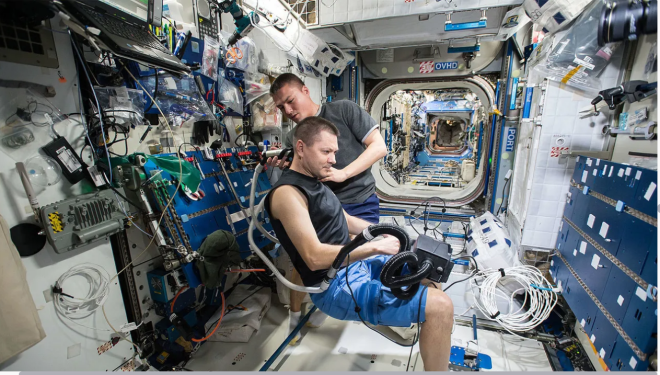

This module was initially known as node number 2; But in March 2007, NASA named it Harmony. At that time, NASA held a name competition among 32 American states, in which 2,200 kindergartens participated, and Harmony was chosen among the proposed names. At that time, NASA presented the children with information about the space station and asked them to build a small model and choose a name for it. Harmony in the term means the center that hosts scientific works. Harmony was launched on October 23, 2007, as part of the STS-120 mission and arrived at the station 3 days later.
Tranquility module
Tranquility, also known as Node 3, was built by the European Space Agency and the Italian Space Agency. In February 2010, NASA sent this module into space with the help of a space shuttle. The task of controlling and commanding this module was assigned to NASA from the very beginning. This node has 6 connecting valves, But one of them is still inactive because the rocket it was supposed to connect to was never launched.
In this node, more necessary life support equipment is placed and there is also a water purification system. The water purification system of this node can turn the astronauts’ urine into drinking water again if needed. The crew can use the oxygen generators in this node when necessary. The connecting valves of this node are each connected to a part. The first valve is connected to the Unity module, the heart of the station, and the others are connected to the Assonardo module, the Bigelow expandable module, the pressure connection valve number 3, and the Copola module.
Columbus module
Columbus is the first European research laboratory of the space station. In this module, there is a small laboratory and facilities for biological research and fluid physics. Several special bases are placed on the outside of this module, on which equipment can be installed to provide data and electrical energy necessary for external laboratory equipment. The European Space Agency plans to expand the space station to study quantum physics and cosmology. The European Space Agency is always trying to improve the life support systems of this module and make it still usable for the next 20 years.
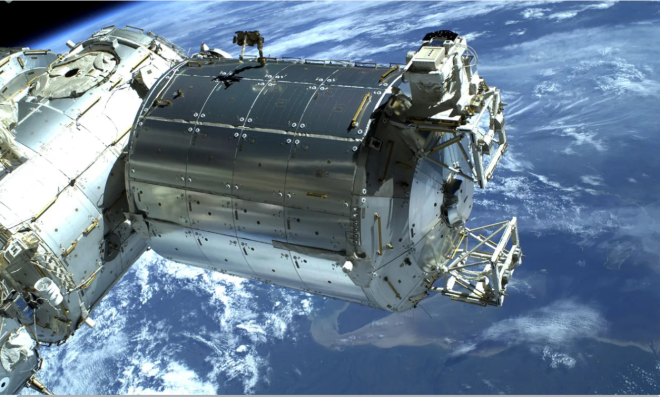

Kibo Laboratory
Kibo is a Japanese laboratory and also the largest module of the International Space Station. Scientists use this laboratory to study space medicine, biology, earth observation, materials production in space, biotechnology, and the development of communication technologies. In this laboratory, there is equipment that can be used to grow flowers in space. In August 2011, the MAXI observatory was installed on the Kibo module. The observatory uses the orbiting orbit of the space station to take X-ray images of the entire sky. This observatory was able to observe a star being swallowed by a black hole for the first time.
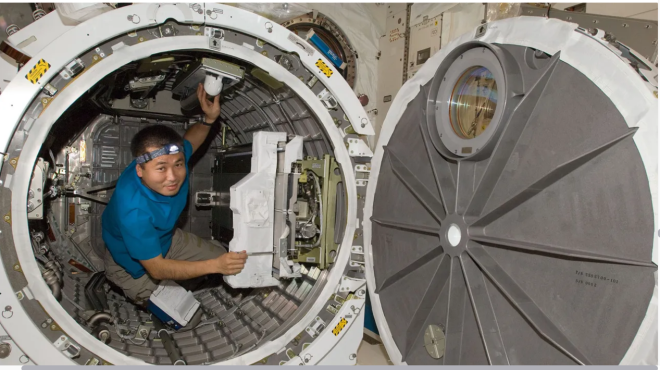

This module consists of 23 different sections, 10 of which are laboratory sections. This module also has an air seal for testing. Another pressurized module is attached to the top of the Kibo, which mostly serves as a compartment for additional equipment.
Copula module
The cupola is an observatory that has 7 windows and is used to observe the Earth and connect other spacecraft. The name of this module is inspired by the Italian word copola which means dome. The construction of the Coppola module was done by NASA and Boeing; But due to lack of funds, the work was stopped. Sometime later, in an agreement between NASA and the European Space Agency, this organization agreed to pay part of the cost, and thus the construction process resumed in 1998.


Boeing was no longer the contractor for this project and its construction was handed over to the Italian Space Agency. This module has 7 small glass windows and a circular window with a diameter of 80 cm, which is the largest window of the space station so far.
The future of the station
As it was said at the beginning, the station is supposed to remain operational until 2028; on the other hand, NASA will probably stop cooperating with the project until 2024, and stopping NASA’s cooperation will probably mean the end of the space station. It was in 2014 that the US Congress announced that it had to decide on the International Space Station and see if it could still be funded. Finally, in the same year, Congress announced that it would retire the International Space Station in 2024 and not fund it. With these interpretations, there are only six years left in the life of the International Space Station; Only seven years, and then it is not clear what is going to happen.
NASA spends the other half of its budget on rover missions, sending humans to Mars or sending to an asteroid. If NASA is to expand its projects and enter space exploration into a new field, it will no longer be able to allocate three to four billion dollars of its annual budget to the International Space Station. Of course, this is not a decision made by NASA; Rather, Congress and especially the White House decide how much funding NASA receives.
As mentioned at the beginning, one of the ways that NASA can investigate how to send humans to other planets is to test this work on the International Space Station. This station has a microgravity environment (weightlessness of humans and other objects) and is outside the Earth’s atmosphere; This means that scientists of all sciences can conduct their own experiments on the station to observe the effects of space on everything. Also, in this station, the effects of long-term human stay in a zero-gravity environment are measured. Recently, some politicians have said whether all the funds allocated to the International Space Station were worth it or not; Unfortunately, it seems that the United States Congress does not have a very good record of supporting applied sciences.
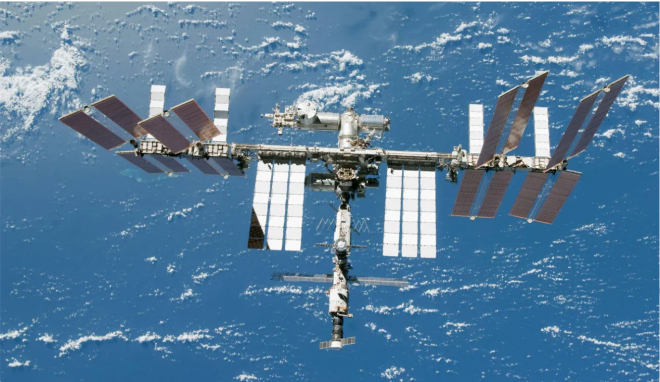

No one is saying that the International Space Station should be supported and funded forever. With the growing private sector and large companies such as SpaceX, Blue Origin, and Virgin Galactic, we hope that one day the International Space Station will be supported by the private sector. There are some companies that are interested in making equipment for use in space; These companies can pay huge sums of money just to be able to test their equipment on the International Space Station. Maybe Elon Musk will decide to add this station to his company’s subsidiary; no one knows However, in the next two years, 5 more modules will be connected to the International Space Station, which will be used for different applications; But different countries are still waiting for NASA’s green light for the station to be operational by 2028.
Cost
As mentioned at the beginning, the International Space Station is the most expensive man-made integrated structure. In 2010, it was announced that the total cost of the station is likely to be around $150 billion, of which $72.4 billion belongs to NASA. The Russian Space Agency spent $12 billion, the European Space Agency $5 billion, the Japanese Space Agency $5 billion, and the Canadian Space Agency spent $2 billion to build the station. The cost of launching each shuttle was 1.4 billion dollars, and by calculating the 36 launches and the cost of construction, it can be said that this process alone cost 50.4 billion dollars. With another calculation, we can find out that in 15 years, the daily cost of each crew member at the station was 7.5 million dollars.
Interesting Facts
- 16 countries are members of the International Space Station project. These countries are the United States of America, Russia, Canada, Japan, Belgium, Brazil, Denmark, France, Germany, Italy, Netherlands, Norway, Spain, Sweden, Switzerland, and the United Kingdom.
- The International Space Station orbits at a speed of approximately 8 kilometers per second, which means that the space station orbits the Earth once every 90 minutes.
- You might think that your apartment or house has more space than the space station, But it is interesting to know that this station has a total length of 109 meters provides a lot of space for the crew and has a lot of rooms.
- The International Space Station is the largest man-made structure in space and has a total of 1141829 cubic centimeters of internal space.
- There are only two toilets throughout the station. The water used in these services, together with the astronauts’ urine, is re-purified and turned into drinking water.
- Being in space does not mean being safe from computer viruses. There are 52 computers in the space station, each of which has been infected with the virus more than once. For the first time, these computers were infected with a worm designed to steal computer game passwords.
- The International Space Station is the only place in space where you can smell the smallest things. One of the astronauts said that he felt a special smell like the ionization of metal. Such a smell is rarely felt on earth.
- The International Space Station is the brightest object in the night sky after the Moon and Venus, and if the weather is clear, you can see the space station with the naked eye.
- Being in space destroys bone tissue and muscles. Therefore, astronauts should exercise two hours a day to avoid any problems.
- In total, 12.87 kilometers of cables have been used in the space station, which is more than the cables used in New York’s Central Park.
- Astronauts eat only three meals a day and do not know if they are sitting or not while eating; Because sitting in the space makes no sense at all, and there are no special seats in the station’s kitchen.
Conclusion
In general, it can be said that the International Space Station is a masterpiece of human engineering in space. This station was built thanks to the great experience of Russia and America and it allocates a lot of budget annually. The existence of this station in the Earth’s orbit is very necessary; Because in the near future, humans will travel to the moon, Mars, and other planets, and they must make the necessary preparations in the space station. It is still unclear what will happen to the International Space Station and what NASA will decide about it.
With the growth of private organizations such as SpaceX, it seems that this project will be left to the private sector and NASA will focus on other sectors. However, the space station is currently the only place in space where humans can go; Because humans haven’t left Earth’s lower orbit for almost 50 years.
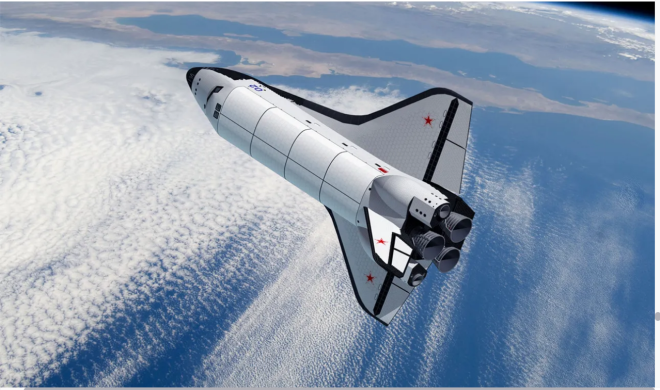

The International Space Station owes its existence to stations such as Salyut, Almaz, Mir, and Skylab, and maybe if these stations were not built, the ISS would not have progressed to this extent. Of course, we should not forget Dr. Werner von Braun, the creator of the Southern 5 rocket; Because he proposed the idea of building a space station for the first time. We are still in the early stages of space station development. The International Space Station has made significant progress over Salyut, Skylab, and Mir; But we still have a long way to go to make the big space stations and colony-centered ones a reality as written by science-fiction writers.
It seems that in the future space stations will have artificial gravity, and none of our stations currently have gravity. Another reason is that we lack the technology to actually spin a massive system like a space station, so we can’t create artificial gravity.


You may like
-

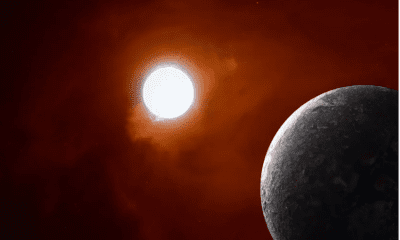


Maybe the Earth is not doomed by the death of the sun
-

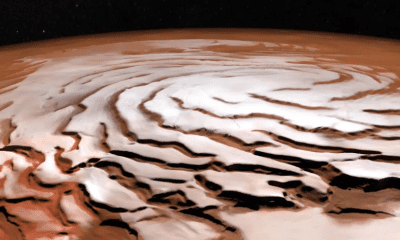


Alien life may be hiding under the Martian ice cover
-

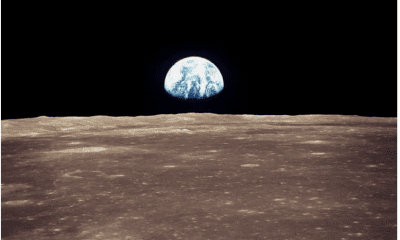


Why is it still difficult to land on the moon?
-

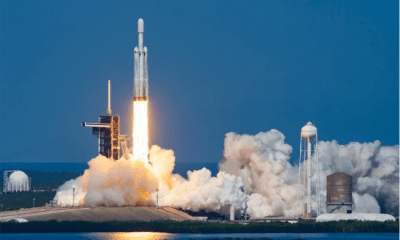


Europa Clipper, NASA’s flagship probe was launched
-

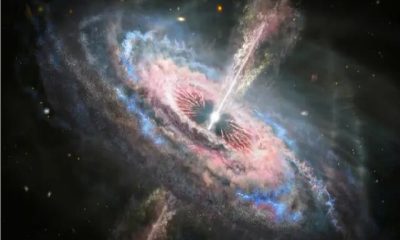


Dark matter and ordinary matter can interact without gravity!
-




James Webb Space Telescope deepens cosmology’s biggest controversy


Maybe the Earth is not doomed by the death of the sun
Will the sun one day destroy the earth? This may or may not happen. Astronomers have spotted a rocky planet the size of Earth orbiting a white dwarf, hinting at a future in which our planet outlives its star.
In 6 billion years, the sun will grow and become a red giant star. At this point, Mercury and perhaps Venus will be swallowed up, and for a long time, we thought that planet Earth would also be incinerated. But maybe the blue planet is not doomed, even though it may become an uninhabitable world in the next 6 billion years.
According to the New York Times, scientists have discovered a rocky planet orbiting a star that has passed its red giant phase. The planet now orbits a white dwarf, a smaller stellar body left over after a star burns out.
Importantly, the planet appears to have once been in the same position as the Earth now orbits our Sun. Before being swallowed up by its dying star, the rocky planet was pushed into a distant orbit, twice the distance between Earth and the Sun. In this way, the discovered world is considered the first rocky planet that has been seen rotating around a white dwarf.
A rocky Earth-like planet has survived the destruction of its star
“We don’t know if Earth can survive,” said astrophysicist Kaming Zhang of the University of California, San Diego, who led the study published in the journal Nature Astronomy. “If it survives, it will become such a system.”
The rocky planet is about 4,000 light-years away and in 2020, the South Korean Radio Astronomy Observatory discovered it using a process called gravitational microconvergence. The Korean team observed the star of the rocky planet while passing in front of a distant star, and that star magnified the amount of light reaching the telescope by a thousand times. This effect, known as convergence or gravitational lensing, makes it possible to identify very distant and faint objects.
That particular event was a one-off event, and the chances of further detailed observations are limited until powerful new telescopes can get a better look at the rocky planet in the future. But Dr. Zhang and his team were able to do more last year at the Keck Observatory in Hawaii and found out that the planet’s star is actually a white dwarf.
The researchers calculated that at least two objects are orbiting the white dwarf. One of them was a brown dwarf; That is, the failed star that had never ignited by nuclear fusion and was located at a great distance from the central star. But the other object is a planet with a mass of about 1.9 times that of Earth, which orbits closer to the star’s period and is therefore likely to be a rocky world.
By modeling the evolution of the star system, Zhang’s team calculated that the planet may have once been in a habitable orbit like Earth. The star was probably the same size as ours. “We expect the star to have been roughly the same mass as the Sun,” Dr. Zhang said.
 Gravitational convergence shows the white dwarf shown by the vertical white lines. The researchers captured images of the star years before the event (a), shortly after the background star peaked in 2020 (b), and after it disappeared in 2023 (c).
Gravitational convergence shows the white dwarf shown by the vertical white lines. The researchers captured images of the star years before the event (a), shortly after the background star peaked in 2020 (b), and after it disappeared in 2023 (c).
But as the star ran out of fuel, it lost some of its mass, causing the rocky planet’s orbit to lengthen. The rocky planet escaped from the expanding red giant phase of the star and survived to the white dwarf stage.
A handful of gas planets have been found orbiting white dwarfs, but they were either in more distant orbits or had migrated inward and closer after the red giant phase. “If Dr. Zhang’s diagnosis is correct, this would be the first rocky planet orbiting such a star,” said Susan Mulally, an astronomer at the Space Telescope Science Institute in Maryland. “It’s definitely the smallest and clearest rocky planet we’ve ever found around a white dwarf.”
A handful of gas planets have been discovered orbiting white dwarfs
Stephen Kane, an astronomer at the University of California Riverside, noted that he was excited when he first read the paper. He has previously investigated whether planets can survive when their stars pass through the red giant phase, so he is intrigued by the new discovery. However, the presence of the brown dwarf complicates everything. If the brown dwarf was once closer to the star but moved outward, it could change the dynamics of the entire system, he explained. That means, maybe there are other planets that have been thrown out and the planets that are currently observed are among the survivors.
NASA is scheduled to launch the Nancy Grace Roman Space Telescope before 2027 and is expected to find more planets through gravitational microconvergence. Perhaps some of them are orbiting white dwarfs.


Alien life may be hiding under the Martian ice cover
A new study suggests that the conditions necessary for photosynthesis on Mars may exist beneath the dusty ice cover in the Red Planet’s mid-latitudes.
Photosynthesis is a process by which living organisms such as plants, algae, and cyanobacteria can produce chemical energy. This process requires water and light to progress and produces much of the oxygen in the Earth’s atmosphere. According to the new findings, Martian ice layers of sufficient thickness can filter out intense solar radiation while still allowing sunlight to penetrate beneath them for photosynthesis, creating so-called “radiatively habitable” zones.
Since the process of photosynthesis is suitable for light, the new results should be considered in sufficient light conditions. While the findings don’t prove that life exists on Mars, or even existed in the distant past, they can give scientists ideas to search for. Aditya Kholler, a postdoctoral researcher and research supervisor at NASA’s Jet Propulsion Laboratory, says the Martian dusty ice in the mid-latitudes is exposed to sunlight and could be an accessible environment to search for life on Mars today.
 Images of the Red Planet from NASA’s Mars Exploration Orbiter (MRO).
Images of the Red Planet from NASA’s Mars Exploration Orbiter (MRO).
Earth vs. Mars
Both Earth and Mars are located in a range known as the Sun’s life belt; A region around a star where the temperature is favorable for the flow of surface liquid water. Although 71% of Earth’s surface is covered by liquid water oceans, Mars has a mostly dry landscape.
Discoveries of Mars rovers such as Curiosity and Perseverance have shown that conditions on Mars are different. Surface features such as dry lake beds and river forks discovered by these robots indicate the presence of surface liquid water billions of years ago. Additionally, Mars missions such as the Mars Reconnaissance Orbiter (MRO) have often discovered water ice in unexpected areas.
According to scientists, Mars lost its liquid water billions of years ago; Just as the planet’s magnetic field weakened (Earth’s magnetism is still very strong) and much of its atmosphere was lost. Thus, there were few barriers to surface water evaporation. The absence of a thick atmosphere also means that today’s Mars is under the bombardment of harmful ultraviolet radiation from the sun, which is fatal for living organisms and can destroy the complex molecules needed for life.
 NASA’s Discovery Orbiter image of craters in the Cyrene region of Mars.
NASA’s Discovery Orbiter image of craters in the Cyrene region of Mars.
Unlike Earth, Mars does not have an ozone protective shield; As a result, the level of surface ultraviolet radiation is 30% higher than that of the earth; Therefore, photosynthesis on Mars probably occurs in places that are inside the dusty ice; Because the dusty ice cover can block harmful UV rays on the surface of Mars, and liquid water is highly unstable due to the planet’s dry atmosphere.
Using computer simulations, the researchers found that Martian dusty ice may melt from the inside and that the overlying ice cover prevents shallow subsurface liquid water from evaporating in the dry Martian air. According to Kholer:
Thus, two key elements for photosynthesis could be present in mid-latitude Martian dust ices. Photosynthesis requires sufficient amounts of sunlight as well as liquid water. Two previous independent simulations of dense Martian snow show that if small amounts of dust (less than one percent) are present in the snow, subsurface melting could occur in the mid-latitudes of present-day Mars.
“With the discovery of dusty ice that was exposed a few years ago within snow masses in Martian glaciers, there is a mechanism for subsurface melting that could underlie the formation of shallow subsurface liquid water,” Kholer added. According to Kholer, the dusty ice on the ice cap can block UV radiation from the surface of Mars and also allow sunlight to penetrate below the surface for photosynthesis.
 An image from NASA’s Discovery Orbiter of a puddle in the Dao Wallis region of Mars.
An image from NASA’s Discovery Orbiter of a puddle in the Dao Wallis region of Mars.
The depth required for the formation of radiative habitable zones depends on the amount of dust in the ice. Very dusty ice can block a lot of sunlight, the researchers’ simulations show. However, ice with 0.01 to 0.1 percent dust allows for the formation of a radiative zone between 5 and 38 cm deep. Less contaminated ice allows for a deeper and wider radiation zone at a depth between 2.2 and 3.1 meters.
According to researchers, the polar regions that have the most ice on Mars are too cold for habitable radiation zones; Because they do not have the subsurface melting mechanism. Such a mechanism probably occurs in the middle latitudes of the Red Planet.
Scientists have taken scientific support for their theory from evidence on planet Earth. Kholer says:
I was surprised to learn that similar areas for life exist within dusty and sedimentary polar ice. These areas are called cryoconite cavities and are formed when dust and sediment on the ice melts into it because it is darker than the ice.
 Evidence from Earth: Cryoconite-formed cavities on the Matanuska Glacier, Alaska, 2012
Evidence from Earth: Cryoconite-formed cavities on the Matanuska Glacier, Alaska, 2012
Every summer, due to heating by sunlight, liquid water gathers around the dark dust inside the ice. This happens because the ice is semi-transparent, allowing sunlight to penetrate below its surface. According to Khüler, the researchers discovered that the tiny organisms that live in these shallow subsurface habitats on Earth usually go dormant in the winter, when there isn’t enough light to form liquid water in the dusty ice.
Of course, none of the above findings mean that photosynthetic life exists on Mars or probably ever existed; But it could inspire further research into the possibility of radiation habitats on the Red Planet. Kholer adds:
I am working with a group of scientists on improved simulations of where and when the ice melts on present-day Mars. Additionally, we are recreating these dusty ice scenarios in the lab to investigate them in more detail.
The results of the research were published on October 17 in the journal Communications Earth & Environment.


Why is it still difficult to land on the moon?
This year, the private company Spacel and the Indian Space Organization both met tragic ends when they tried to land their spacecraft on the surface of the moon. Despite the astonishing leaps made in recent decades in computing, artificial intelligence and other technologies, it seems that landing on the moon should be easier now; But recent setbacks show that we still have a long way to go with safe and trouble-free landings on the surface of Earth’s only moon.
50 years after sending the first man to the surface of the moon, the question arises as to why safely landing a spacecraft on Earth’s nearest cosmic neighbor is still a difficult task for space agencies and private space companies. Stay with Zoomit to check the answer to this question.
Why is the lunar landing associated with 15 minutes of fear?
Despite the complexities of any space mission, sending an object from Earth into orbit around the moon today is easy. Christopher Riley, the director of the documentary film In the Shadow of the Moon produced in 2007 and the author of the book Where We Stood (2019), both of which are about the history of the Apollo 11 mission, explained the reasons for the difficulty of landing on the moon in an interview with Digital Trends. is According to him: “Today, the paths between the Earth and the Moon are well known, and it is easy to predict them and fly inside them.”
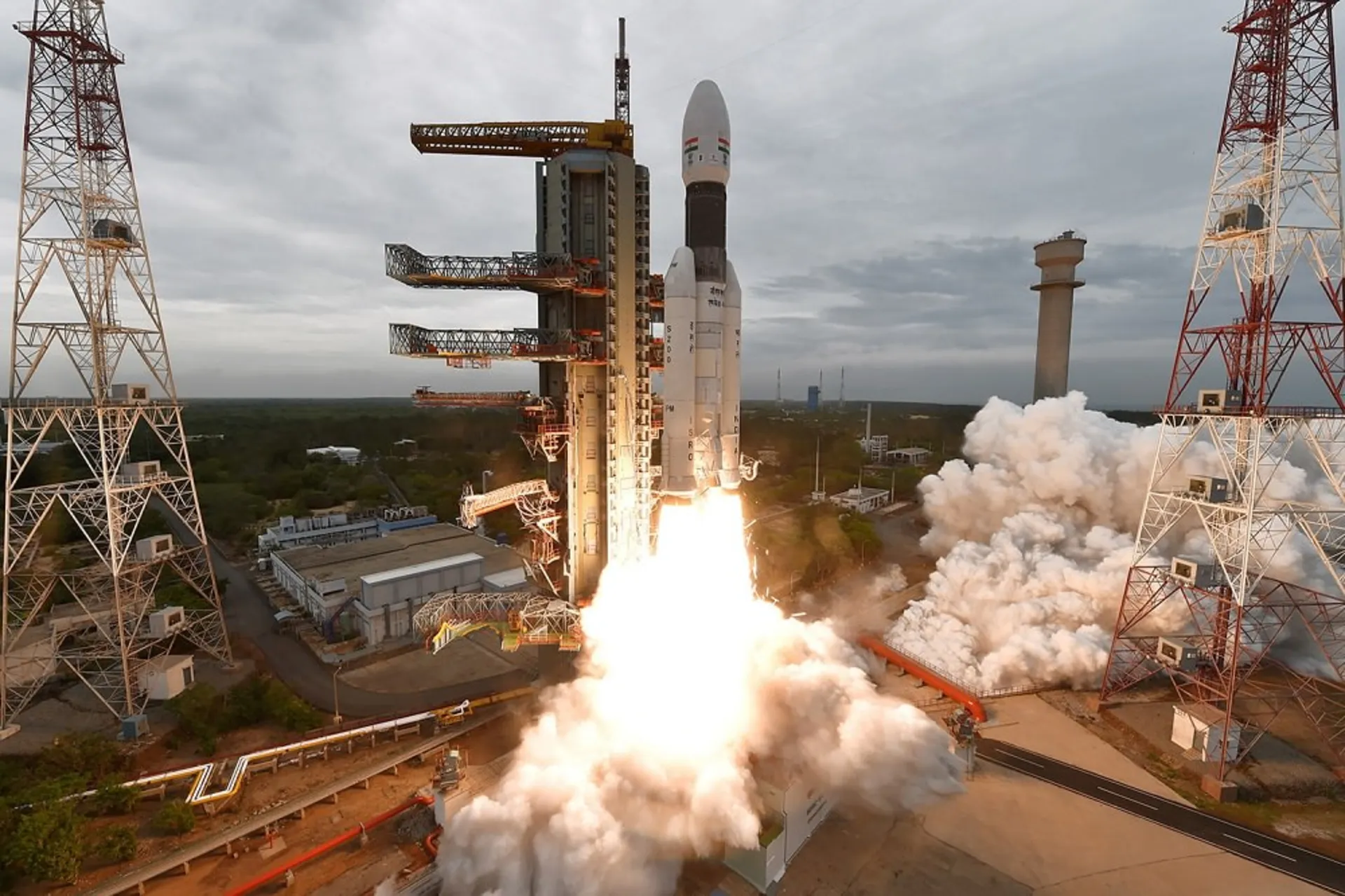
Chandrayaan 2 mission launch
However, the real challenge is getting the spacecraft out of orbit and landing it on the lunar surface; Because there is a delay in the communication between the Earth and the Moon, and the people in the control room who are present on the Earth cannot manually control the spacecraft in order to land it safely on the Moon. As a result, the spacecraft must descend automatically, and to do so, it will fire its descent engines to slow its speed from thousands of kilometers per hour to about one meter per second, in order to make a safe landing on the lunar surface.
For this reason, the director of the Indian Space Research Organization (ISRO), who was trying to land the Vikram lander last month, described the final descent of the spacecraft as “frightening 15 minutes”; Because as soon as the spacecraft enters the landing stage, the control of its status is out of the hands of the mission control members. They can only watch the spacecraft land and hope that everything goes according to plan, that hundreds of commands are executed correctly, and that the automatic landing systems gently bring the spacecraft closer to the surface of the moon.
The Great Unknown: The Landing Surface
One of the biggest challenges in the final descent phase is identifying the type of landing site. Despite the availability of instruments such as the Lunar Reconnaissance Orbiter (LRO) that can capture amazing views of the lunar surface, it is still difficult to know what kind of surface the spacecraft will encounter when it lands on the moon.
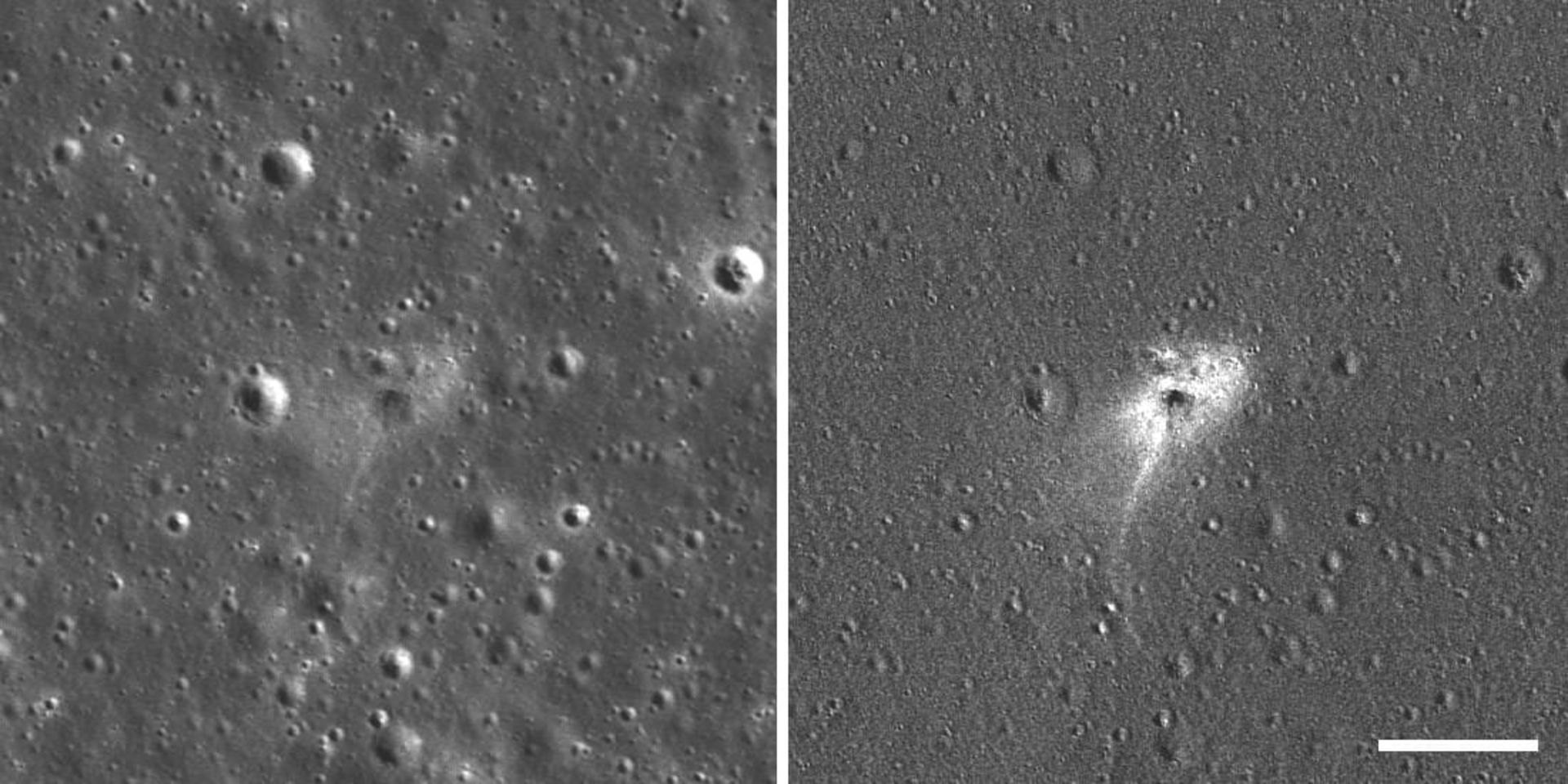
Left: Breshit crash site. Right: The ratio of the before and after images highlights the occurrence of minor changes in surface brightness.
Leonard David, author of Moon Fever: The New Space Race (2019) and veteran space reporter, says:
The Lunar Reconnaissance Orbiter is a very valuable asset that has performed really well over the years; But when you get a few meters above the surface of the moon, complications appear that cannot be seen even with the very powerful LRO camera.
Even today, despite the imaging data available, “some landing sites still have unknown remains,” Riley says. He notes that the Apollo 11 mission included an advantage that today’s unmanned landers lack, which is the presence of an astronaut’s observer’s eyes that can closely observe the surface of the spacecraft’s landing site. As you probably know, in the mission that led to the landing of the first man on the surface of the moon, the Eagle computer was guiding the spacecraft to a place full of boulders; But to avoid hitting the rocky surface of the moon, Armstrong took control of the spacecraft himself and landed it on a flat surface.
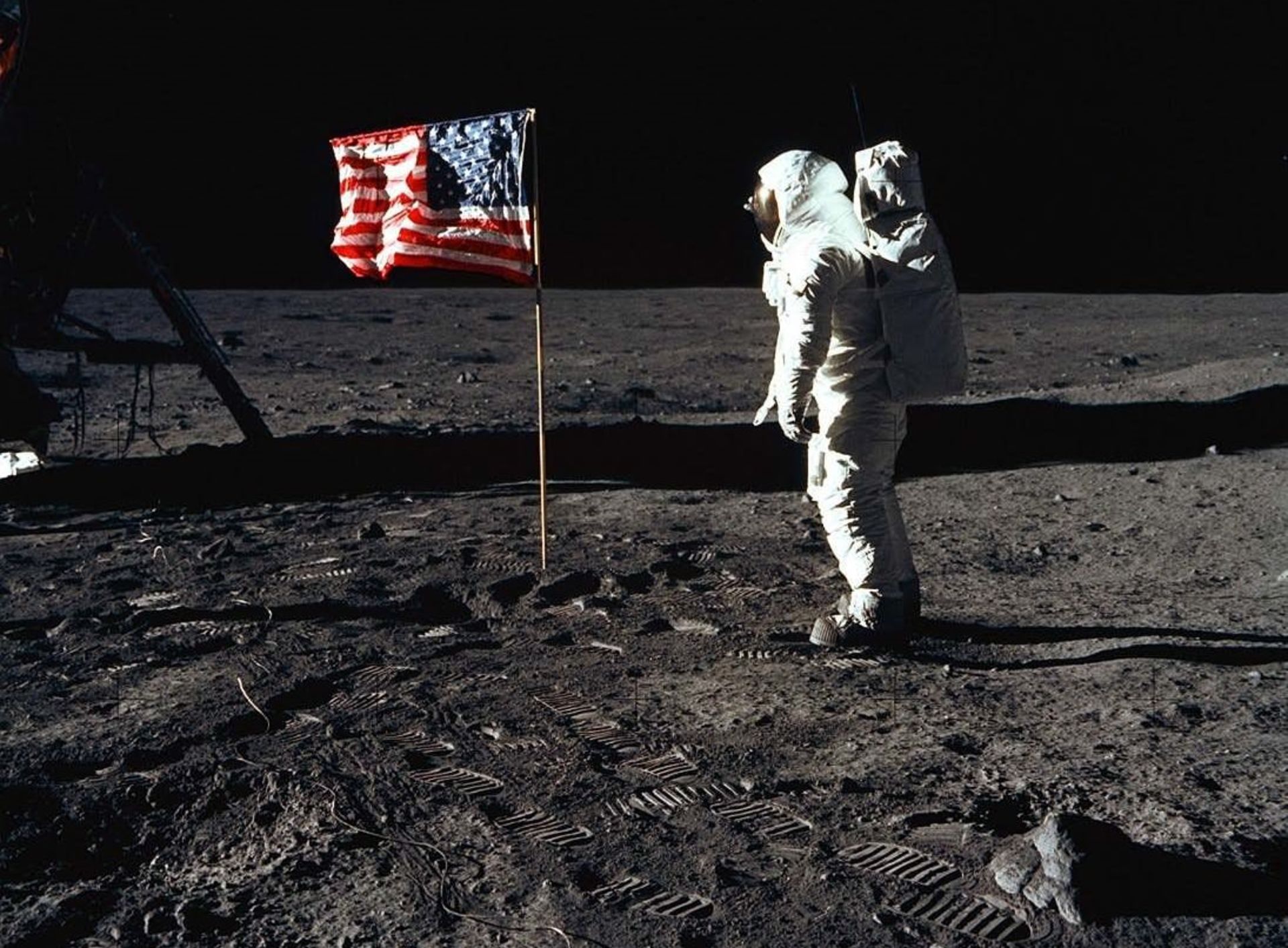
The uneven surface of the landing site had caused many problems in previous lunar missions such as Apollo 15. In this mission, the astronauts were told that as soon as the spacecraft touched the surface of the moon, they should turn off the engines to prevent dust from being sucked in and the risk of a return explosion. But the Apollo 15 spacecraft landed in a crater, and because of this, one of its legs came into contact with the surface earlier than the others. When the crew shut down the engines, the spacecraft, moving at a speed of 1.2 meters per second, experienced a hard landing. The lander landed at an oblique angle, and although it eventually landed safely, it nearly overturned, causing a fatal disaster.
- Half a century after Apollo 11; How did the great human leap happen?
- dust storms; The nightmare of space missions to the moon
The difficult landing of Apollo 15 introduced another complicating factor in lunar landings: lunar dust. The Earth’s moon is covered with dust that is thrown into the air by any movement and sticks to everything it comes in contact with. As the spacecraft approaches the surface of the moon, huge plumes of dust are kicked up that limit the field of view and endanger the spacecraft’s electronics and other systems. We still do not have a solution to deal with the dust problem.
An achievement that has been achieved before
Another reason why the moon landing remains a challenge is that gaining public support for lunar projects seems difficult. Referring to Neil Armstrong and Buzz Aldrin, the two astronauts who walked on the moon during the Apollo 11 mission, David says, “We convinced ourselves that we had sent Neil and Buzz [to the surface of the moon]; “As a result, when it comes to lunar missions, people may say we’ve been there before and we’ve had this success.”
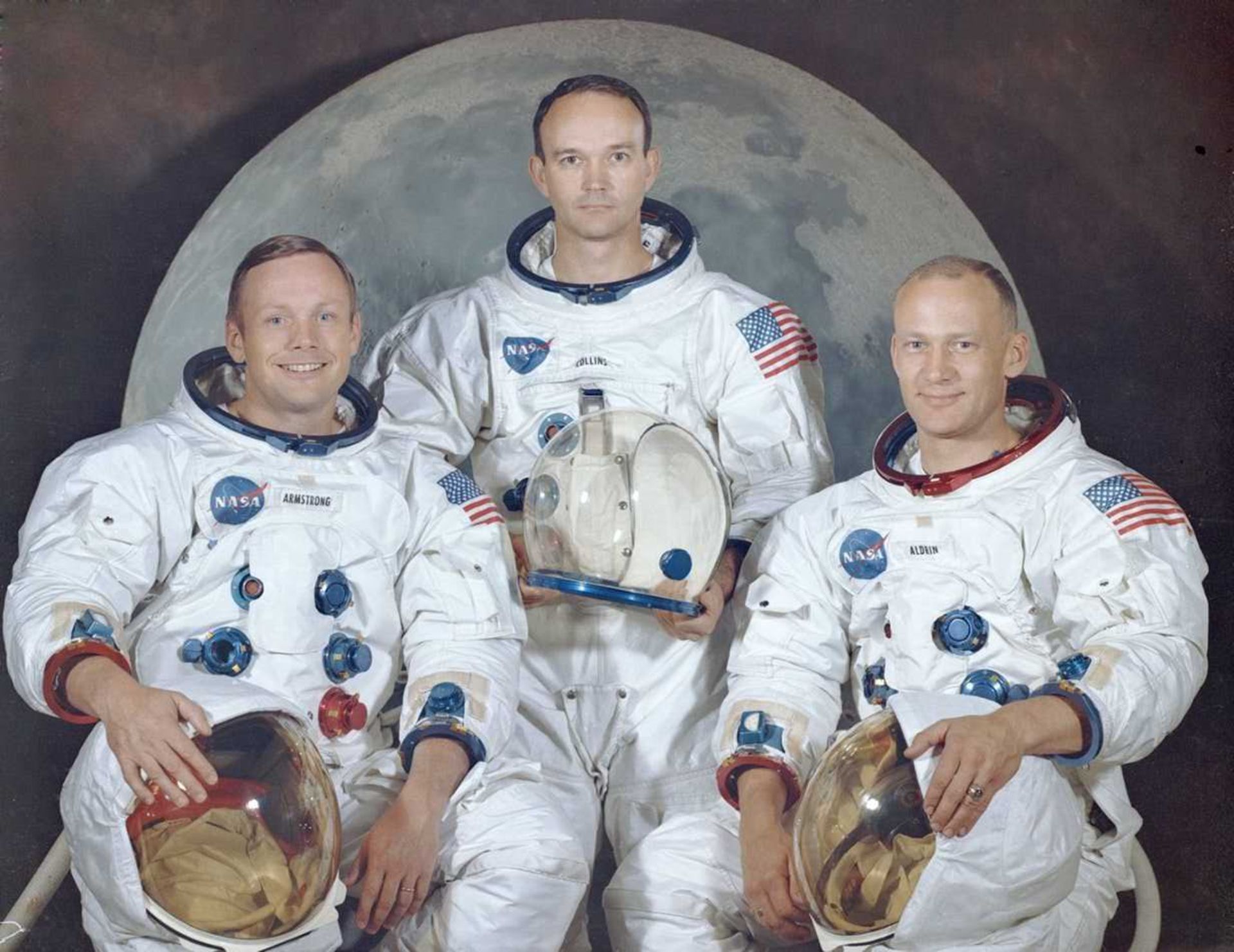
But in reality, our understanding of the moon is still very little, especially in relation to long-term missions. Now, with a 50-year gap between the Apollo missions and NASA’s upcoming Artemis project, the knowledge gained has been lost as engineers and specialists retire. David says:
We need to recover our ability to travel into deep space. We haven’t gone beyond near-Earth orbit since Apollo 17 and since 1972. NASA is no longer the same organization that put men on the moon, and there is a whole new generation of mission operators.
The importance of redundancy
As the first private spacecraft entered into orbit around the moon, the Space project was of considerable importance; But its failure to land smoothly on the surface of the moon made the achievement of landing on the surface of the moon still remain in the hands of governments. However, we can expect more private companies, such as Jeff Bezos ‘ Blue Origin, which is developing its lunar lander, to target the moon in the future. According to Elon Musk, even the giant SpaceX Starship spacecraft, which is being built with the ultimate goal of sending a human mission to Mars , can also land on the moon.
According to David, private companies’ participation in lunar landings has advantages such as increased innovation. However, companies are under pressure to save money, and this can lead to a lack of redundancy and support systems that are essential in the event of errors and malfunctions. Lunar rovers typically include two or even three layers of support systems. David is concerned that private companies will be encouraged to eliminate these redundancies in order to cut costs and save money.

Crew Dragon SpaceX passenger capsule
“We saw Elon Musk’s Dragon capsule catch fire after a failed test on the stand,” says David, referring to the explosion of the SpaceX spacecraft in April, which had no crew on board. “This accident was kind of a wake-up call about how unpredictable the performance of spacecraft can be.” David compared the Crew Dragon incident to the Apollo 1 disaster, which killed three NASA astronauts during a test launch in 1967.
Another problem related to the lack of redundancy systems is the lack of information needed when an error occurs. As for the recent landings, it seems that the SpaceX crash was caused by human error; however, it is not clear what caused the failure of Chandrayaan 2 in the calm landing, and it is possible that without the necessary systems to record and send information to the lander, we will never find out the main reason for the failure of this mission. Without the required data, it becomes much more difficult to prevent problems from reoccurring in the future.
The future of lunar landings
Currently, many projects are underway to facilitate future moon landings. Ultimately, we need to be able to build the necessary infrastructure for a long-term stay on the moon.
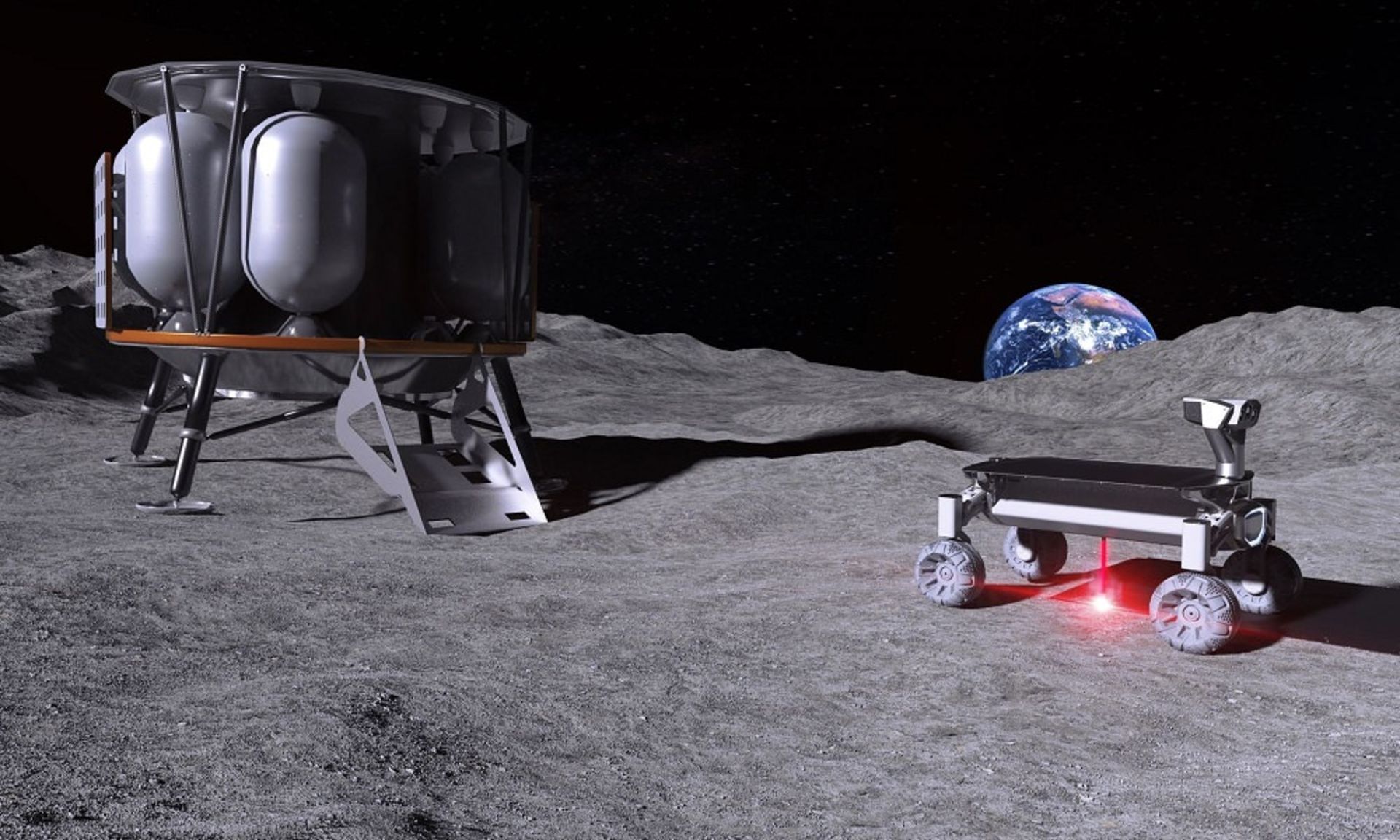
Conceptual design of Moonrise technology on the moon. On the left side is the Alina lunar module, and on the right side, the lunar rover equipped with Moonrise technology melts the lunar soil with the help of a laser.
If we can make long-term stays on the moon possible, or even build a permanent base there, landing spacecraft on the lunar surface will be much easier. By constructing the landing sites, a flat, safe, and free surface of unknown debris can be created for the landing of surface occupants. For example, researchers are currently conducting research at NASA’s Kennedy Space Center to investigate the feasibility of using microwaves to melt the lunar soil (regolith) and turn it into a hard foundation so that it can be used as a landing and launch site. The European Space Agency is also investigating how to use 3D printing to create landing sites and other infrastructure on the moon.
Read more: Europa Clipper, NASA’s flagship probe was launched
Other ideas include the use of lidar remote sensing systems, which are similar to radar systems; But instead of radio waves, it uses lasers to land the spacecraft. Lidar technology provides more accurate readings and uses a network of GPS satellites to help guide the spacecraft during landing.
The problem of public support
As important as technology is, public interest and support are essential to the success of the lunar landing program. “Apollo had enormous resources that are perhaps only comparable today to China’s space program,” says Riley. “Remember that Apollo carried the best computer imaginable, the human brain.” It goes without saying that there is an element of luck involved in every landing.
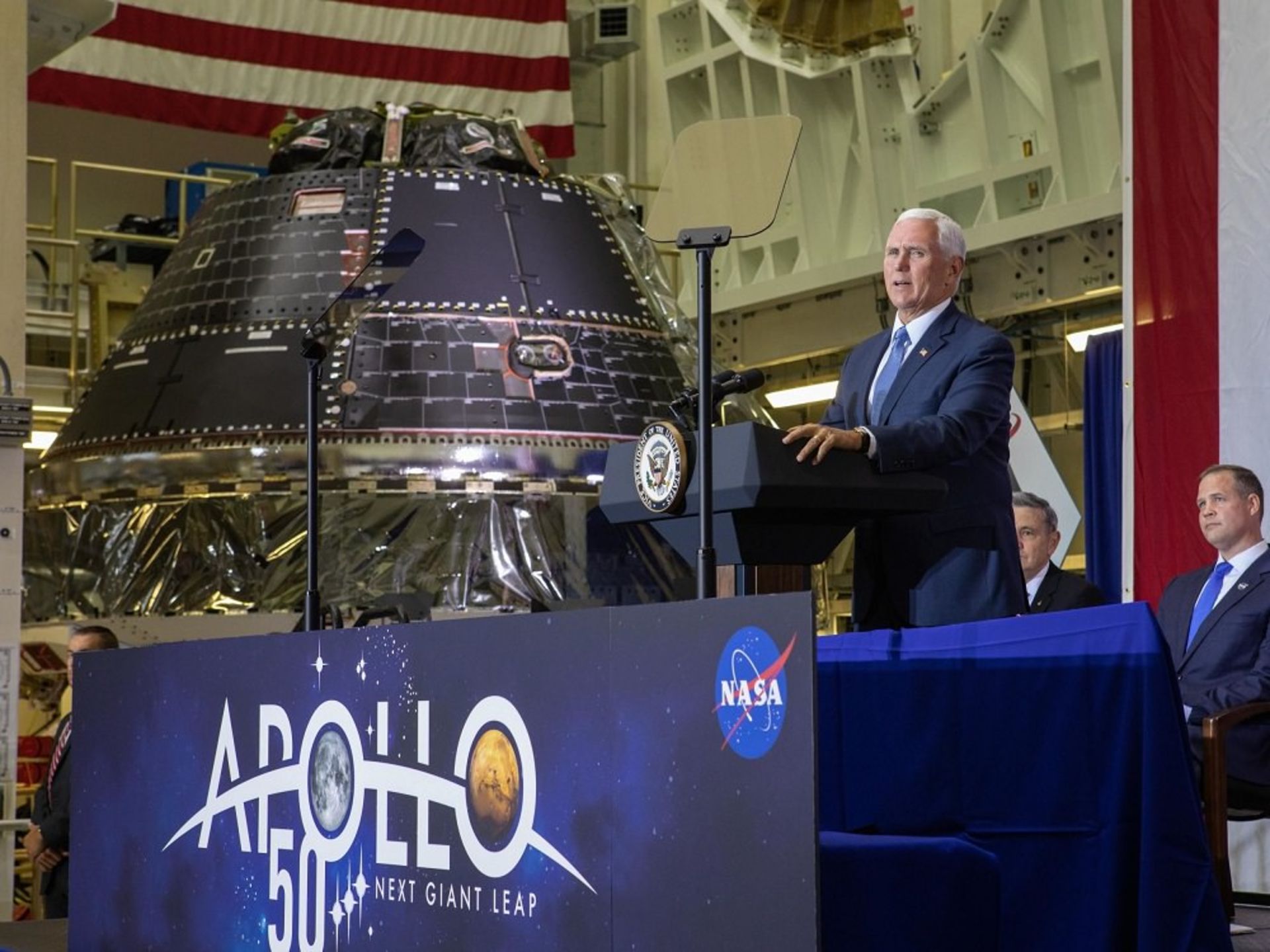
US Vice President Mike Pence speaking at the 50th anniversary of the Apollo 11 mission
Finally, there is the question of what kind of failure is acceptable for people. David says:
I think we have to be serious about the fact that we’re probably going to lose people. There is a serious possibility that the manned lunar lander will crash and kill the astronauts inside. The American people continued to support NASA despite the failures and bad luck of the Apollo program, But at that time there was a lot of pressure to compete with the Soviet Union. Without the bipolar atmosphere of the Cold War and the space race, would people still support missions with human lives in between?


Samsung Galaxy Ring Review


Apple Intelligence Review


An in-depth look at the McLaren W1 supercar


What is CPU; Everything you need to know about processors


Galaxy S24 FE Review


Everything about Cybercube and Robo Van; Elon Musk’s robotic taxis


How did accidental release cause the 1977 Russian flu?


The Secret of the Hummingbird’s Amazing Adaptation


Europa Clipper, NASA’s flagship probe was launched


Why is it still difficult to land on the moon?
Popular
-



 Technology1 year ago
Technology1 year agoWho has checked our Whatsapp profile viewed my Whatsapp August 2023
-



 Technology1 year ago
Technology1 year agoSecond WhatsApp , how to install and download dual WhatsApp August 2023
-

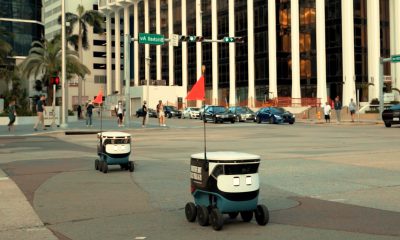

 AI2 years ago
AI2 years agoUber replaces human drivers with robots
-



 Technology1 year ago
Technology1 year agoHow to use ChatGPT on Android and iOS
-



 Technology1 year ago
Technology1 year agoThe best Android tablets 2023, buying guide
-



 Technology1 year ago
Technology1 year agoThe best photography cameras 2023, buying guide and price
-

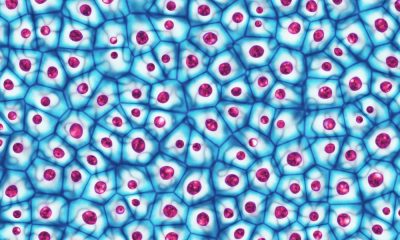

 Humans2 years ago
Humans2 years agoCell Rover analyzes the inside of cells without destroying them
-



 Technology1 year ago
Technology1 year agoHow to prevent automatic download of applications on Samsung phones
